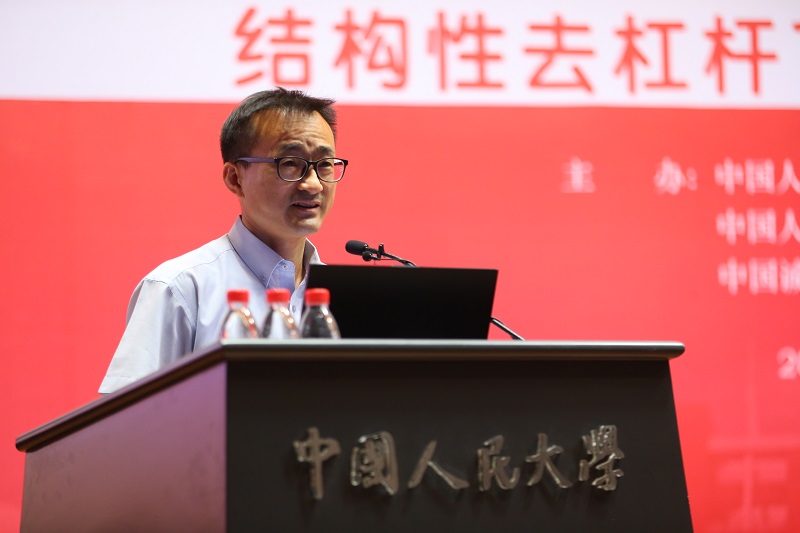 Research Update
Research Update
02
JulOn June 23, the “China Macroeconomic Forum (Mid 2018)” Report Meeting organized by National Academy of Development and Strategy, School of Economics, and China Credit Management Co., Ltd. was held at Renmin University of China. Hu Qiuwu, First Class Professor of Renmin University of China, Wang Yiming, Deputy Director of the Development Research Center of the State Council, Gao Peiyong, Vice President of the Chinese Academy of Social Sciences and Academician of the Chinese Academy of Social Sciences, Zhang Yansheng, Research Fellow of National Development and Reform Commission Academic Committee and Principal Research Fellow of China International Economic Exchange Center, Liu Yuanchun, Vice President of Renmin University of China, Yang Ruilong, Joint Director of the Institute of Economic Research, Renmin University of China, Yan Yan, Chairman of China Chengxin International Credit Rating Co., Ltd., and Joint Deputy Director of the Institute of Economic Research, Renmin University of China, Liu Fengliang, Executive Vice President of the Graduate School, and Chen Yanbin, Deputy Director of the School of Economics and other experts and scholars attended the event.
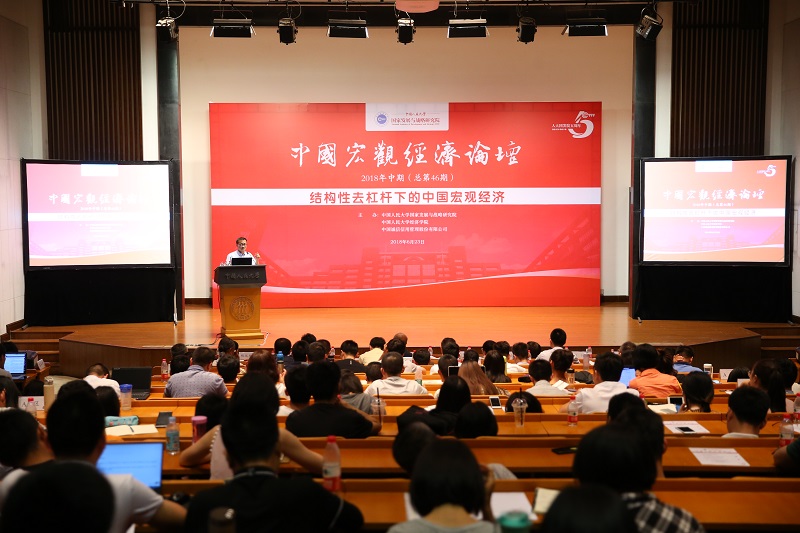
Yang Ruilong moderated the meeting.
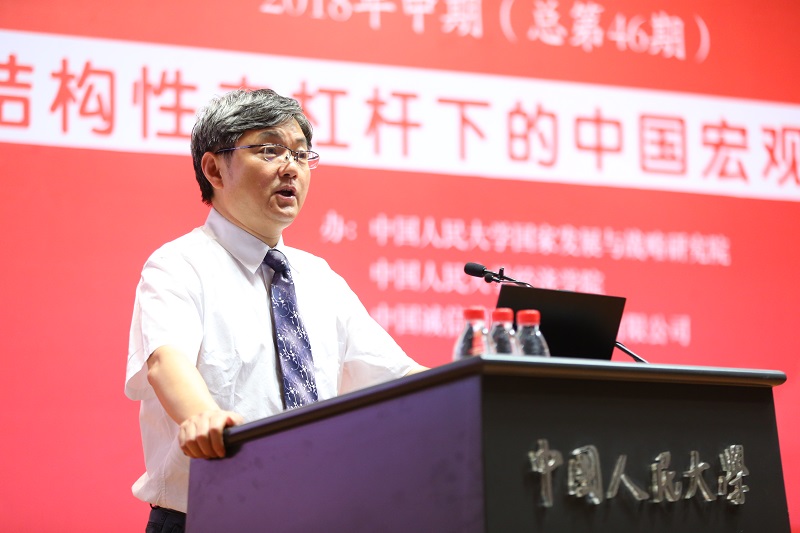
Chen Yanbin, on behalf of the project team, issued 2018 midterm report" Structural deleveraging China's Macroeconomics".
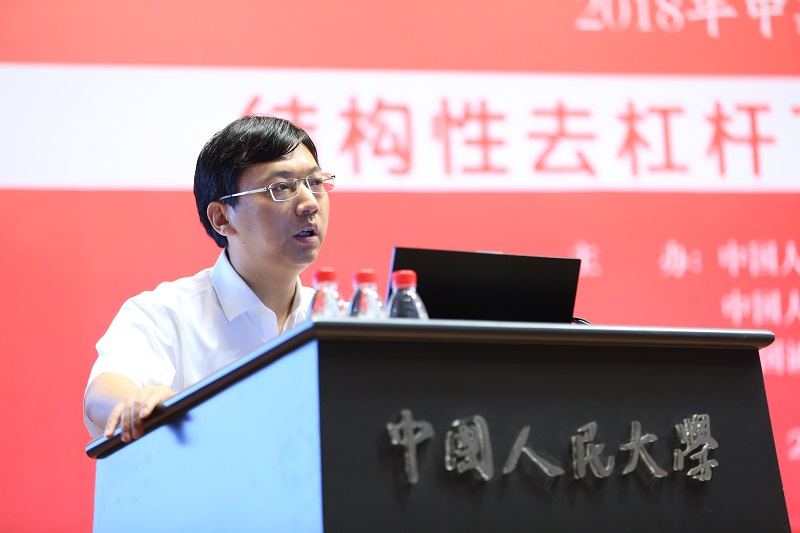
The report pointed out that in the first half of 2018, China's economy was running smoothly, the price level was stable, the employment situation as a whole was improving, and the quality of economic growth was steadily improving. It is expected that the economic growth in the first half of the year will reach around 6.8%, and it will continue to rank among the top economies in the world. However, while the economy is running smoothly, it should be noted that the current economic operation in China is characterized by a strong supply and weak demand. The impact of continued weak demand on economic growth will inevitably appear gradually, which is also the main hidden trouble in the current stable economic operation.
In the second half of the year, the downward pressure on China's economy will increase. It is necessary to guard against six major risks such as the rapid decline in consumption growth, the further increase in macro tax burden, the slowdown in the growth rate of private investment, the unexpectedly slower economic growth in the second half of the year, and the deteriorating performance of some companies and the intensification of the instability of the financial system during the deleveraging process.
The report further pointed out that the high macro leverage ratio is a prominent problem facing the Chinese economy at this stage. According to the Bank for International Settlements (BIS), as of the end of 2017, China's leverage ratio reached 255.7%, not only significantly higher than the average leverage ratio of emerging economies (193.6%), even surpassed some advanced economies such as the United States (251.2%). What deserves more attention is that China's leverage rate shows obvious structural characteristics among different departments and within each department. As far as the corporate sector is concerned, the leverage ratio of state-owned enterprises and real estate enterprises is significantly higher than that of other enterprises, and the problem of high debt is more serious. As far as the residential sector is concerned, although the leverage ratio (48.4%) is lower than the average of developed economies (76.1%), it is significantly higher than the average of emerging economies (39.8%). If the household debt/family disposable income is calculated, the leverage ratio of the Chinese resident sector is as high as 110.9%, which has surpassed the United States. Not only that, in recent years, the housing sector's leverage rate is rising too fast, the debt distribution is uneven and the hidden debt scale is large, which is worthy of high vigilance. In terms of government departments, although the overall leverage ratio is not high (47.0%), due to the low leverage of the central government, the debt pressure is mainly concentrated on local governments. As far as the financial sector is concerned, the expansion of small and medium-sized commercial banks and non-bank financial institutions is even more rapid, and the problem of high leverage is even more serious. The report emphasized that in order to smoothly advance “structural deleveraging”, it is necessary to make trade-offs in seven areas, including the determination to de-leverage.
In the second half of the year, the macroeconomic policy must actively respond to the downward pressure on the economy, guard against the economic growth brought about by de-leveraging that exceeds the expected decline risk, and stimulate the endogenous growth drivers of the economy so that the economy can achieve long-term sustainable development and “high-quality development”. Specifically, the following tasks need to be done: First, consider increasing the fiscal policy appropriately, focusing on lowering the macro tax burden through tax reductions and fee reductions to cope with downward pressure on the economy; Second, continuing to implement “steady neutrality”. The monetary policy is to ensure that the size of social financing grows steadily and that the financing cost will continue to rise; The third is to strengthen macro-prudential supervision; The fourth is to relax regulation, promote competition, and promote basic R&D as the main task of industrial policy; The fifth, to release consumer demand for consumption by improving social security and raising residents' income; The sixth is to seize the six major breakthroughs and accelerate China's economy to achieve "high-quality development."
The session 2 was hosted by Yan Yan. The experts and guests of the conference delivered keynote speeches on China's macroeconomic issues and conducted in-depth exchanges.
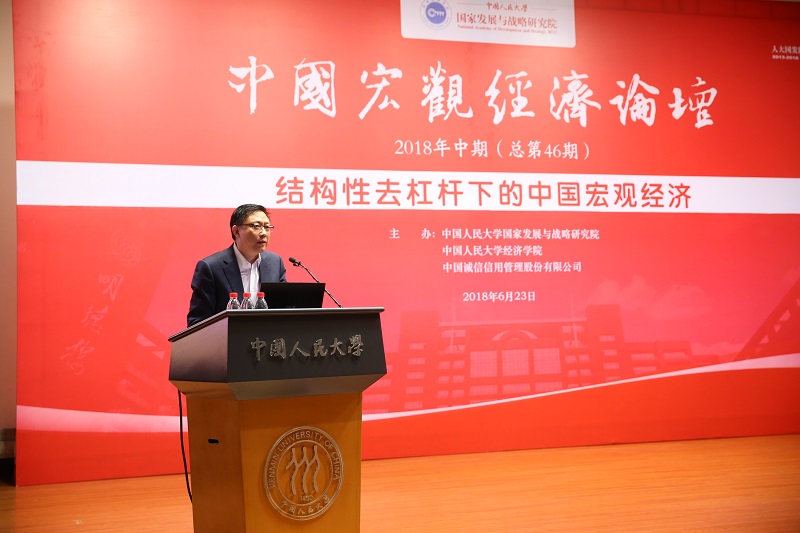
Wang Yiming said that at present, the biggest uncertainty in the external environment is the trade friction between China and the United States. In order to properly deal with Sino-US trade frictions, the most important thing is to stabilize expectations. Wang Yiming stressed that China must adhere to structural reforms and adhere to the basic direction of structural deleveraging. At the same time, it must also have bottom-line thinking. We must do a good job of various preplans and take targeted measures.

Gao Peiyong believes that the biggest risk in the current macroeconomic operation is not so much local debt as the institutional reasons behind local debt. This institutional background is that the fiscal relationship between the central and local governments is not standardized, and the local government's fiscal revenue and expenditure system is not perfect. Therefore, the risk of local government debt and the problem of local government debt should be treated rationally, from the financial relationship between the central and local governments, and from the soundness of the local fiscal system to find the ideas and methods of reform.

Zhang Yansheng said that from the recently released 2018 American Business in China White Paper can be found that American companies are optimistic about the future development prospects of China. More than 70% of foreign investment in China is in the service industry, including technical services, R&D services, information services, and professional services. Therefore, if foreign investors invest in China to form a new growth point, it means that our reform, especially the investment environment, market access, and business environment reform will become the focus.

Liu Yuanchun pointed out that many people talked about the trade war between China and the United States and immediately felt that exports would have major problems. This is not the case. China's exports are related to global demand, and have virtually nothing to do with the $50 billion involved in the trade war. The demand for China’s economy is not as weak as many people are advocating. The policy in the second half of the year requires a series of fine-tuning, and the core of fine-tuning is to stabilize confidence. We do not advocate major policy adjustments, but we must strengthen confidence in the market while maintaining strategic determination and maintaining bottom-line management and expected guidance.
